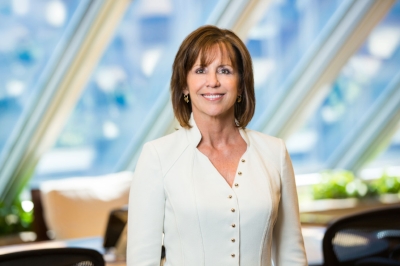Jean Case, CEO, Case Foundation

Where have you seen impact investing make the biggest strides in recent years?
It's an exciting time for the sector, and we have seen some significant signals that the impact investing market is truly taking off. Although it is still early days for impact investing, the movement’s momentum is strong. In the U.S. and around the world, we’ve seen segments of the market start to move from informed, to educated, to activated. As an investor and a philanthropist, I’m energized to see how much the sector has grown in the last 10 years – and how it will expand in the next 10 years.
How well are companies adapting to the mainstreaming of purpose-driven finance?
Impact companies are increasingly taking a place among the world’s most iconic brands — driven by both their financial performance and social impact. Globally recognized brands have been built in this space, including Patagonia, Warby Parker, and SolarCity, just to name a few. These social enterprises represent a new generation of consumer companies that are demonstrating mission-focused approaches that include care and concern for humanity and/or for the well-being of our planet, and in so doing, they are strongly attracting the next generation of consumers.
In what ways is impact investing making headway, and where is it lagging?
Many forces at play demonstrate a promising future for impact investing. Globally, we’ve seen billions of dollars in new private capital unleashed with a focus on impact across sectors, geographies, industries, issue areas, and asset classes. We’ve also seen significant policy wins over the past few years including revised guidance on Program Related and Mission Related Investments, clarification on the integration and analysis of ESG within ERISA-governed pension plans, and the most recent inclusion of the Investing in Opportunity Act (IIOA).
But we still haven’t hit tipping point – while many actors work to build expertise and increase product offerings to the space, capital at sizable scale is not yet flowing freely. A growing body of emerging data makes it clear that impact investing has the opportunity to deliver both the financial returns and social objectives that we need to solve some of our most complex global challenges. The 2017 GIIN Annual Investor Survey maintained that 91 percent of the investors who responded met or exceeded their financial performance expectations. And a 2015 report by the GIIN and Cambridge Associates saw that some types of impact funds outperform their non-impact peers. We need more data – including both financial and impact performance – to make it clear to all investors that there is an opportunity to deliver double bottom line returns while providing a social return.
What challenges do you see for the future of purpose-driven finance?
Several years ago, I wrote a piece about the myths surrounding impact investing – from the myth of concessionary returns, to the myth that the market is limited to “do-gooders,” and that the serious, savvy players haven’t jumped in. Since I chronicled these myths, we have seen progress on many of these fronts and are hopeful that the entrance of multiple players across sectors has helped bust those myths.
However, the lack of transparent data and information in the impact investing field remains a barrier that needs to be overcome. In recent years, the impact investing ecosystem has filled out on the supply and demand sides, with a growing number of investor tools, data, and services. Yet, too often all parts of the impact investing landscape are not visible to both investors and those seeking investment.
The Case Foundation has been dedicated to delivering tools and resources to move investors to action. We describe our role in the movement as “inspire, educate and activate” and we’ve done so through a variety of resources for interested investors and organizations.
What will you be discussing at The Economist's Impact Investing event in New York on February 15?
I’m excited to take the stage with an investor I hold in high regard, Liesel Pritzker Simmons, for a discussion on what we see the future of impact investing looking like and the role that women will play as impact investing continues to grow. There has been a lot of progress over the last decade in impact investing and, while it is still early days and significant barriers remain, I look forward to sharing with the Economist audience why I see real progress in the movement.